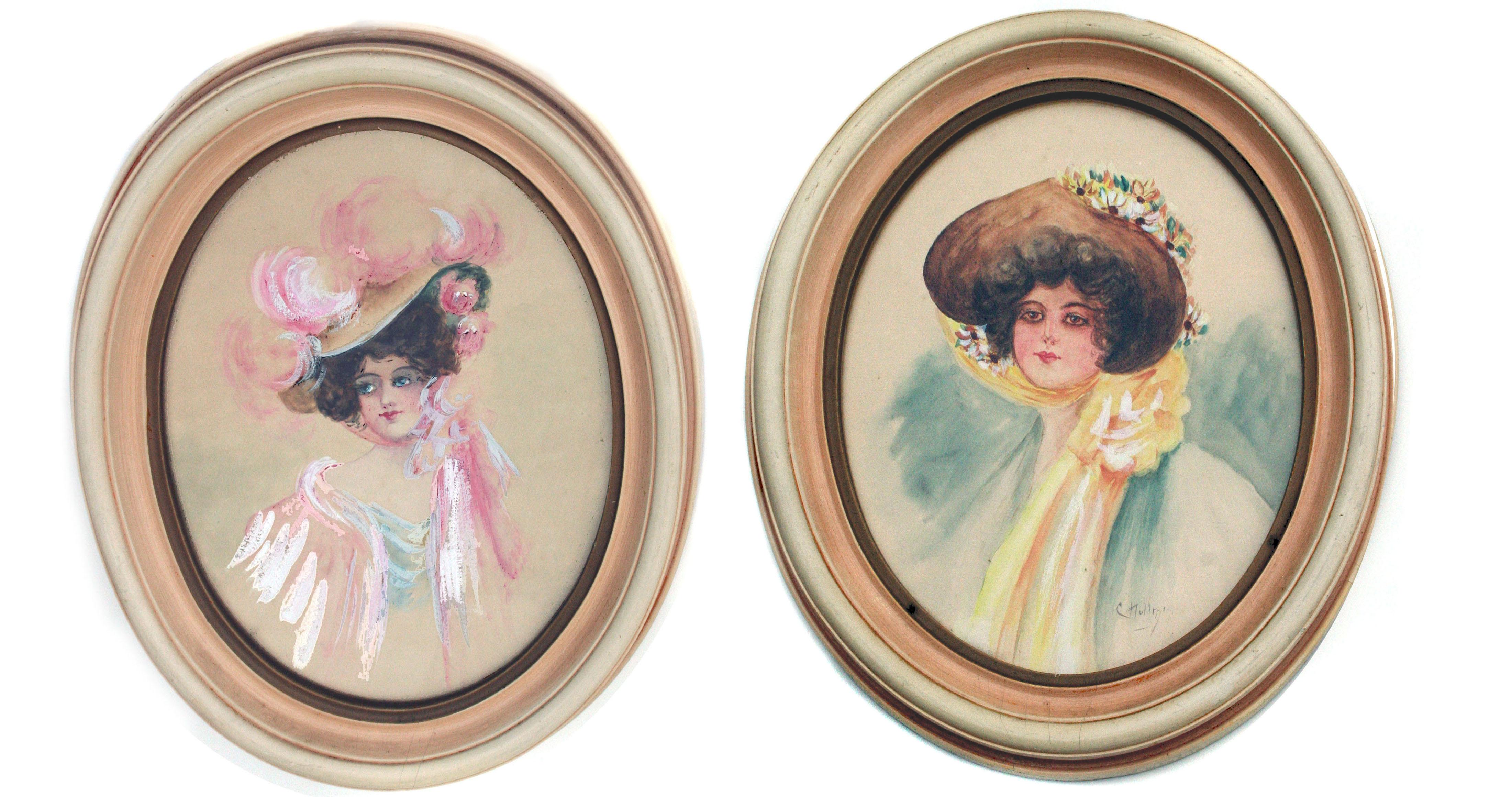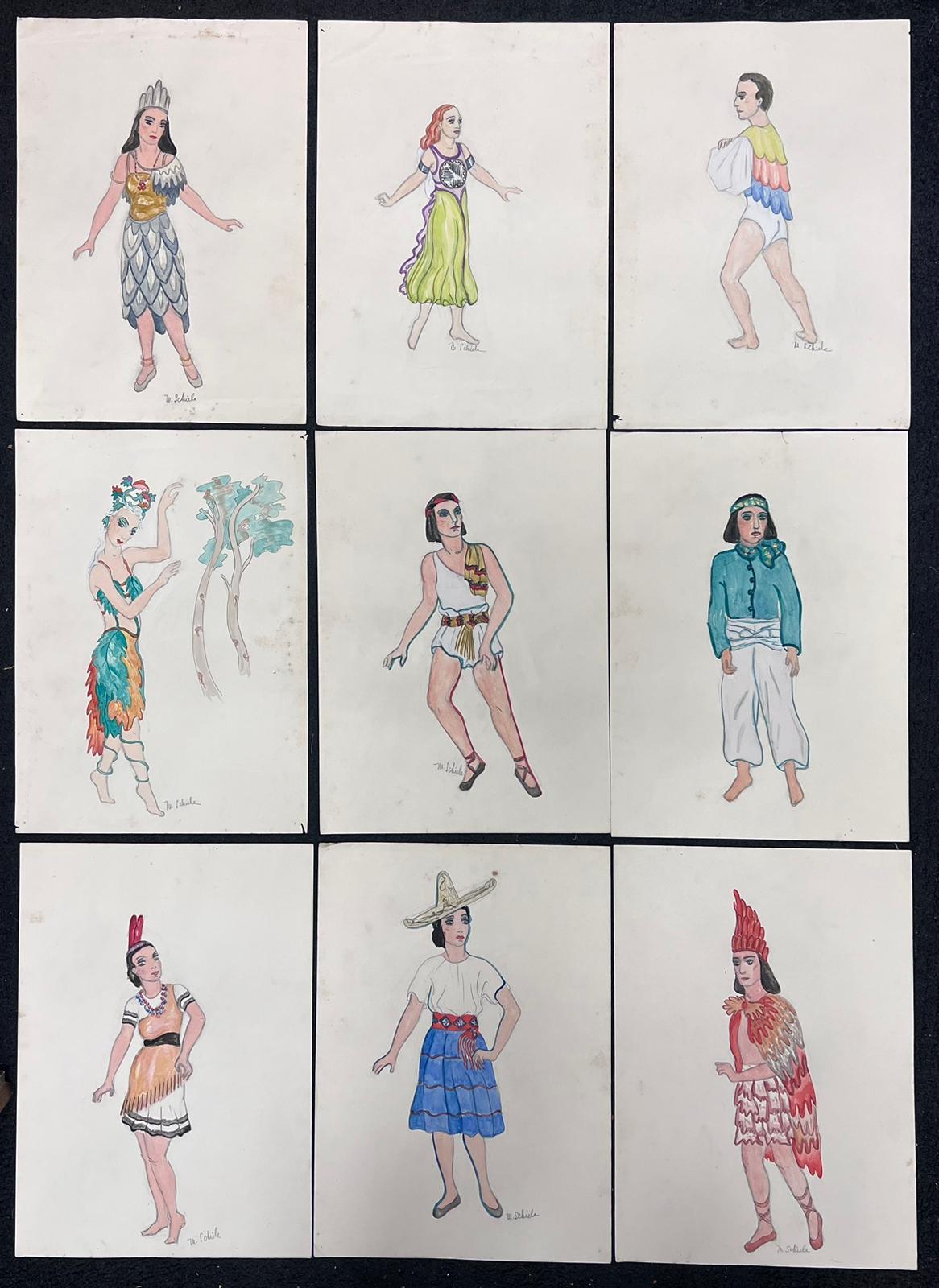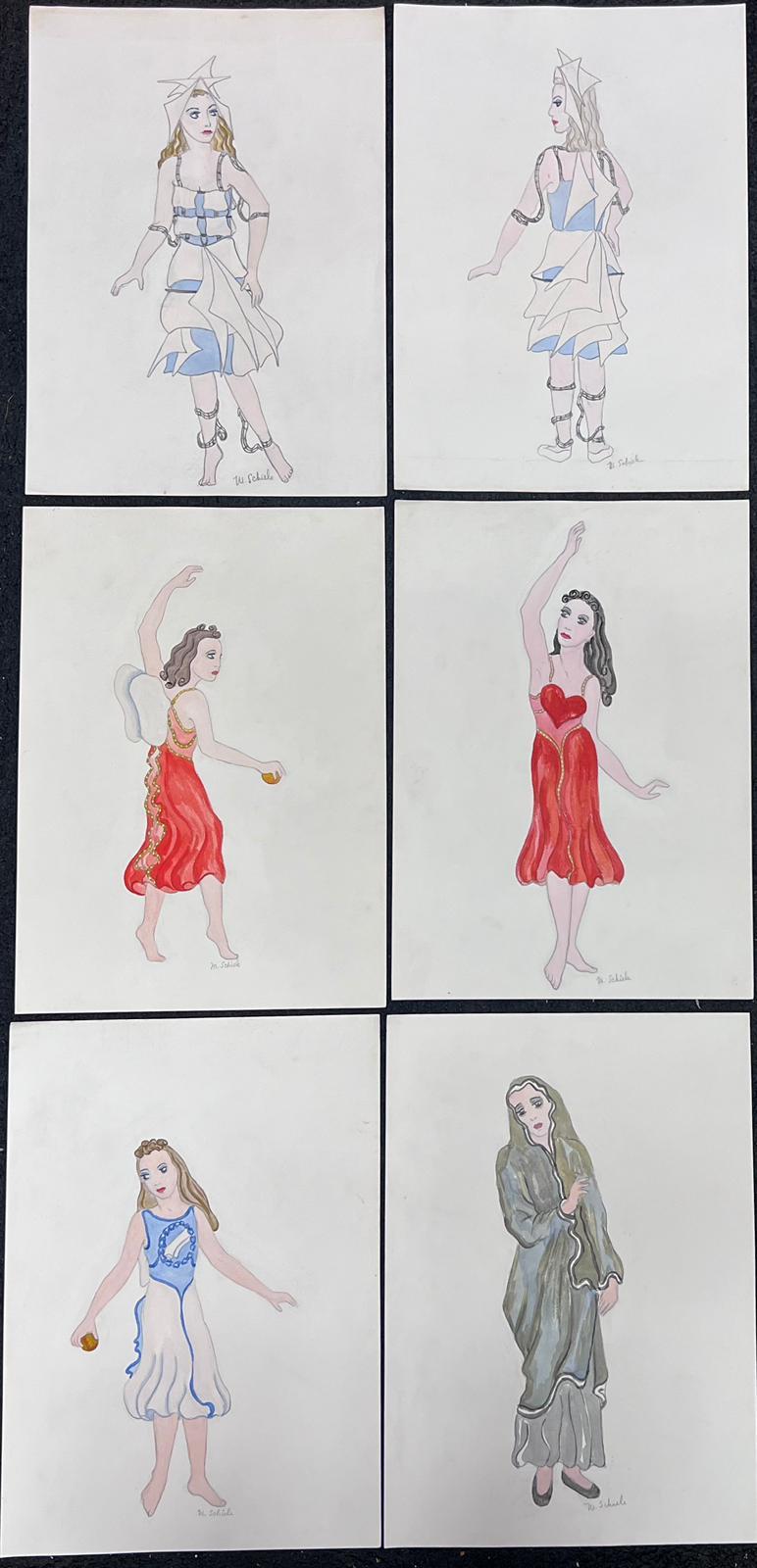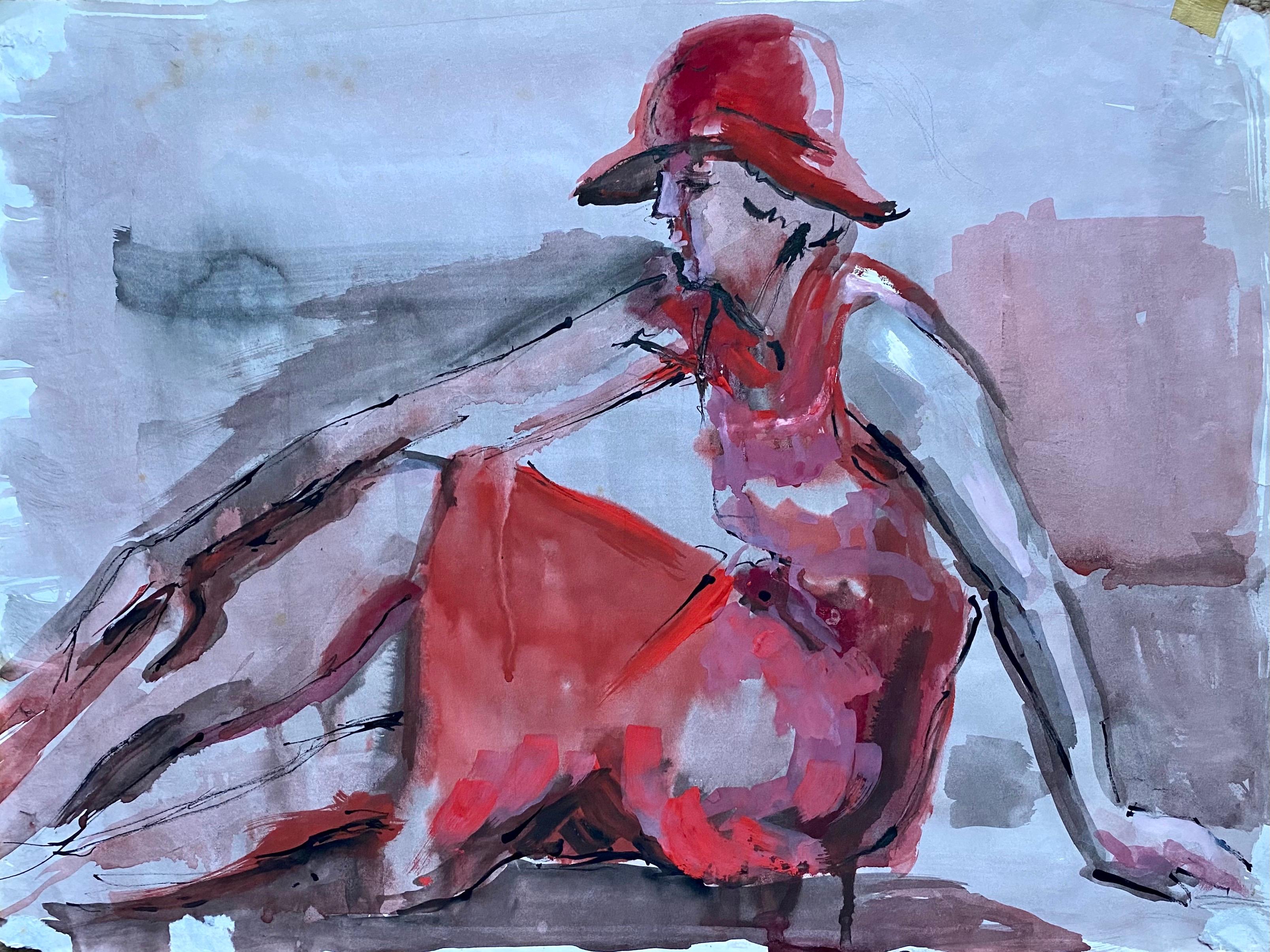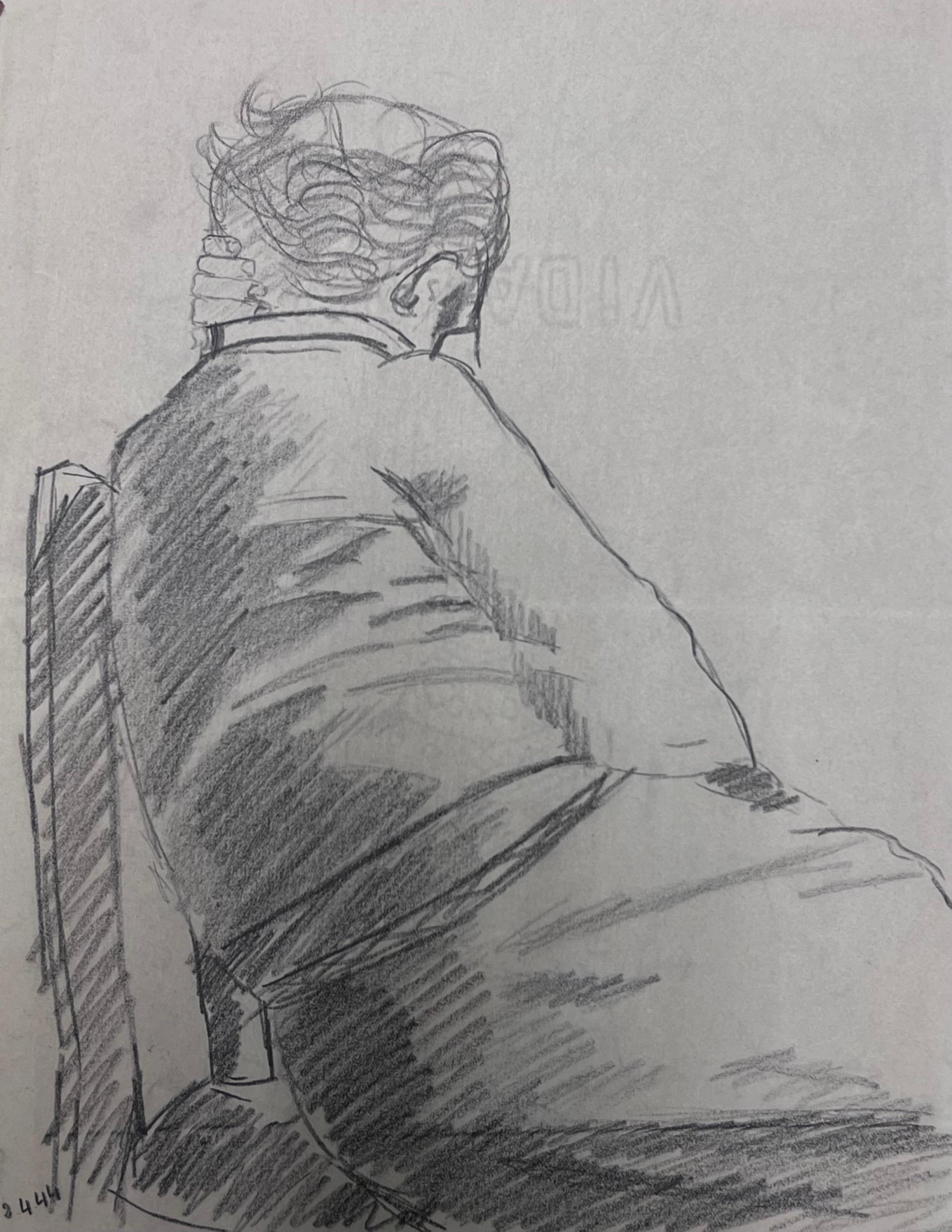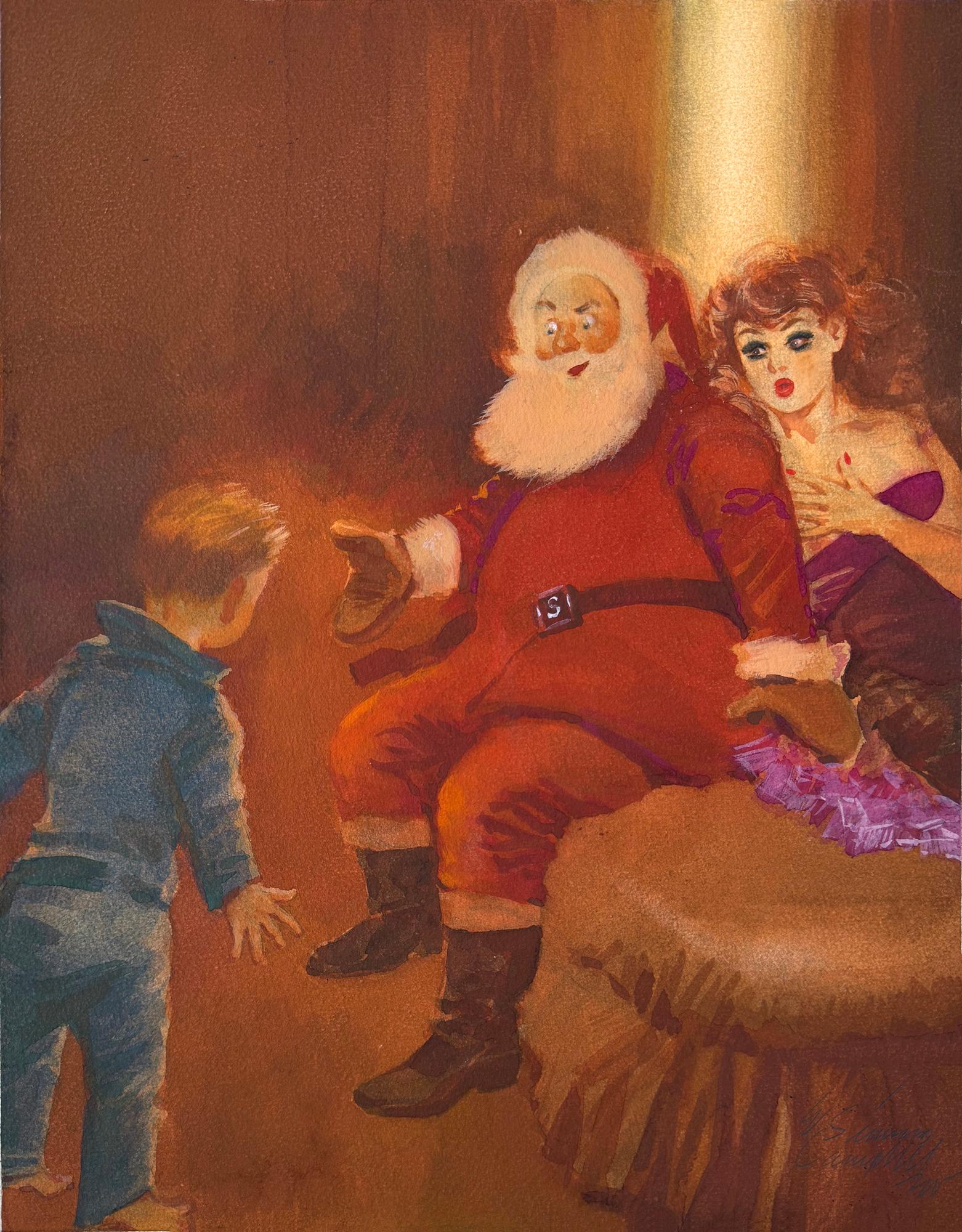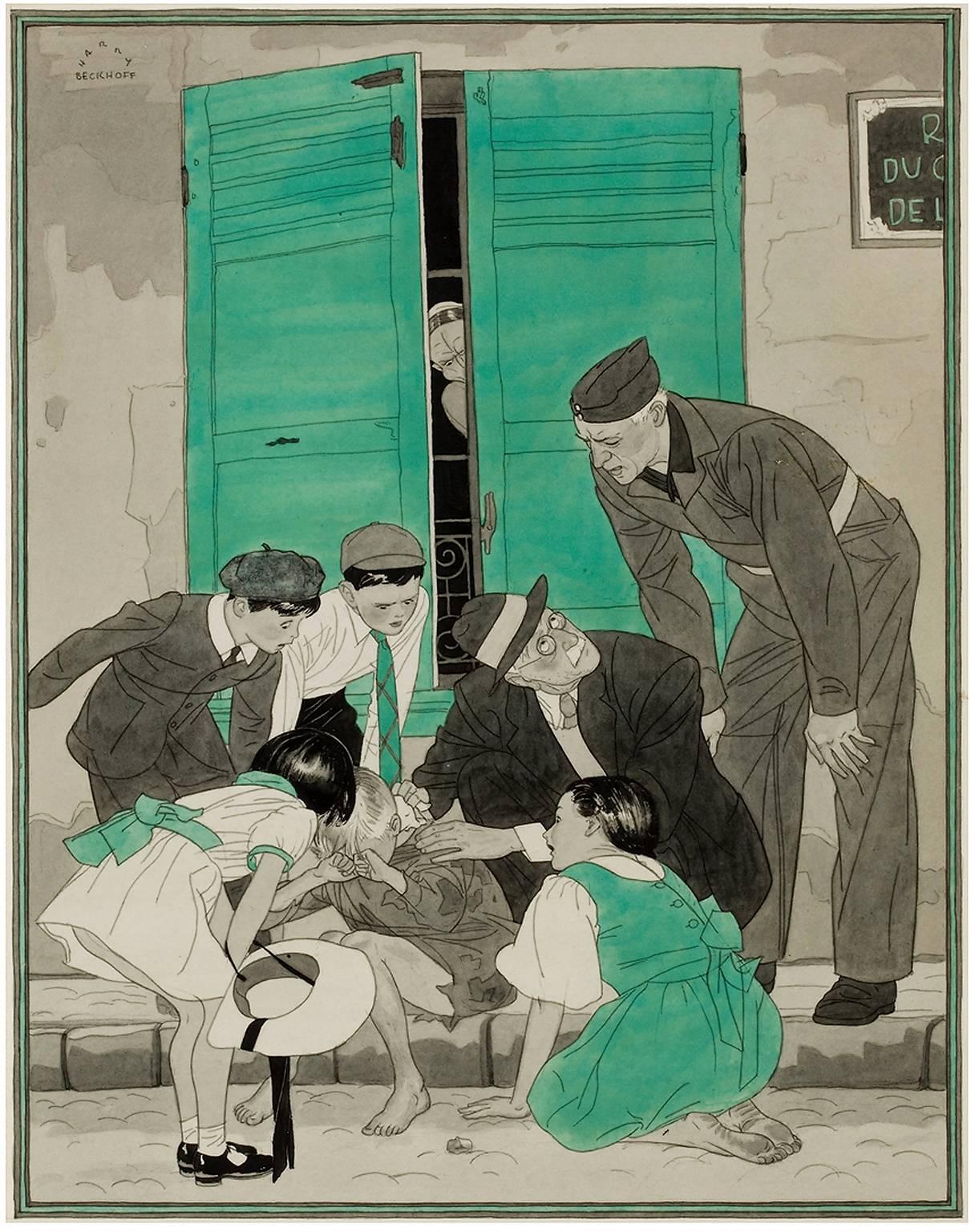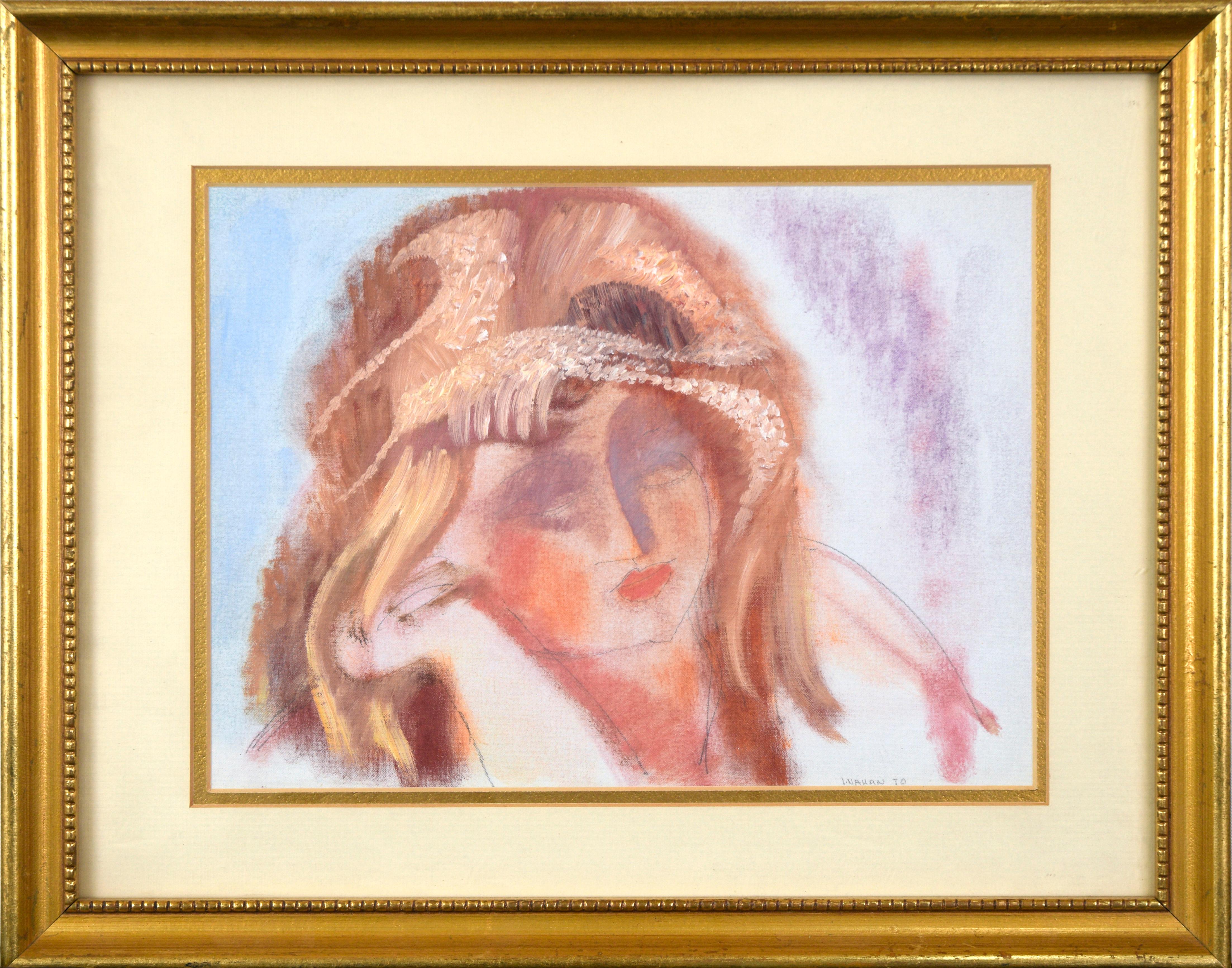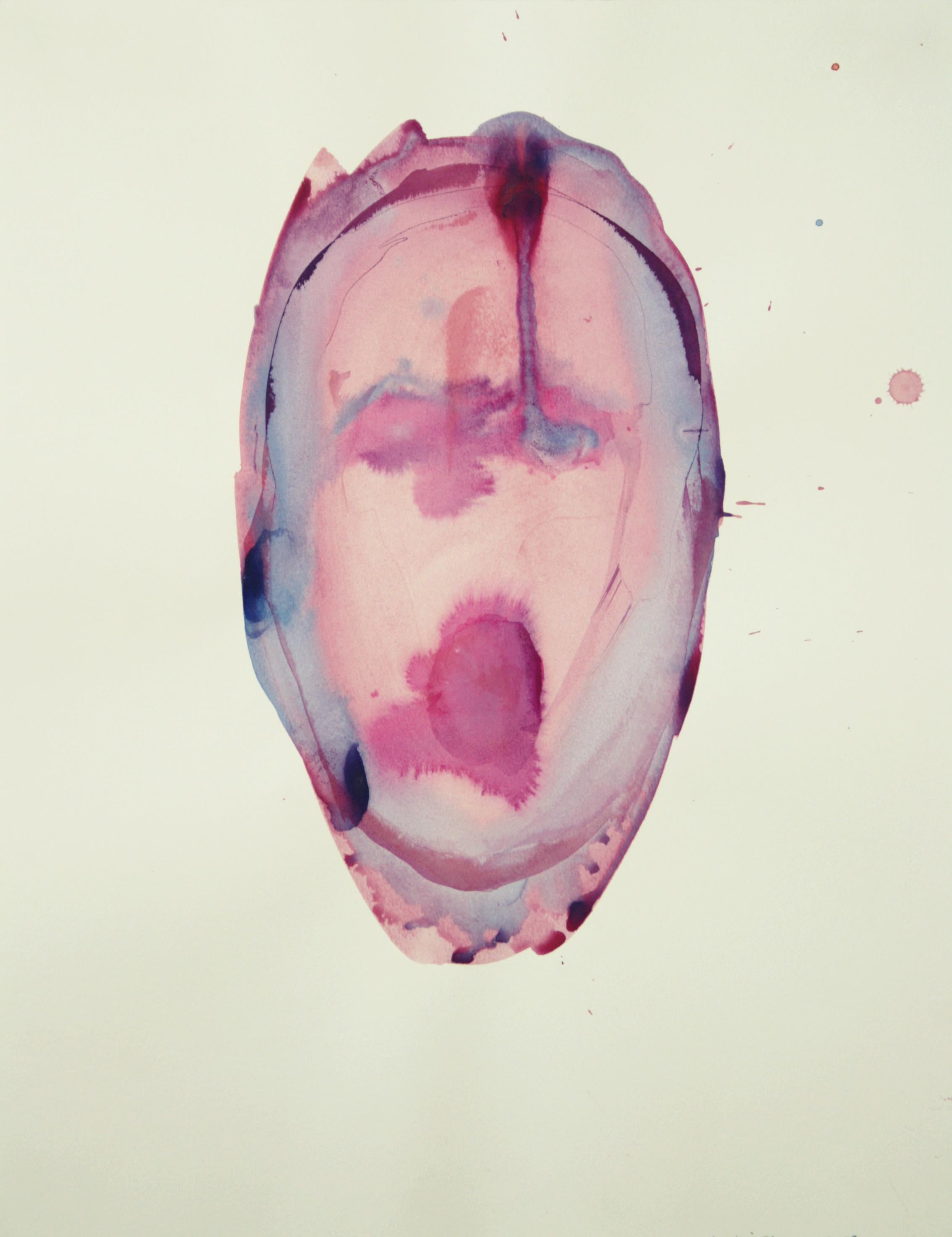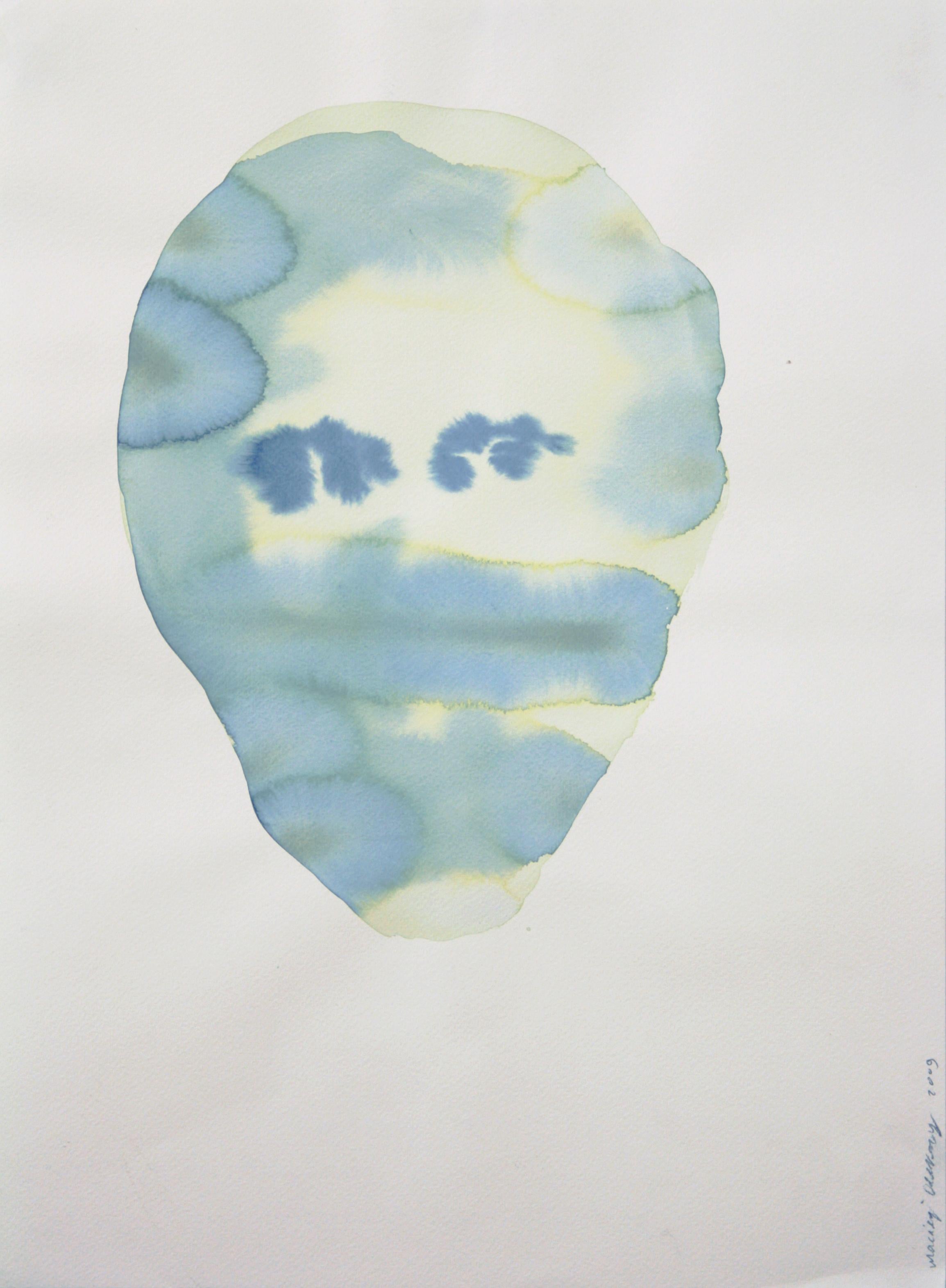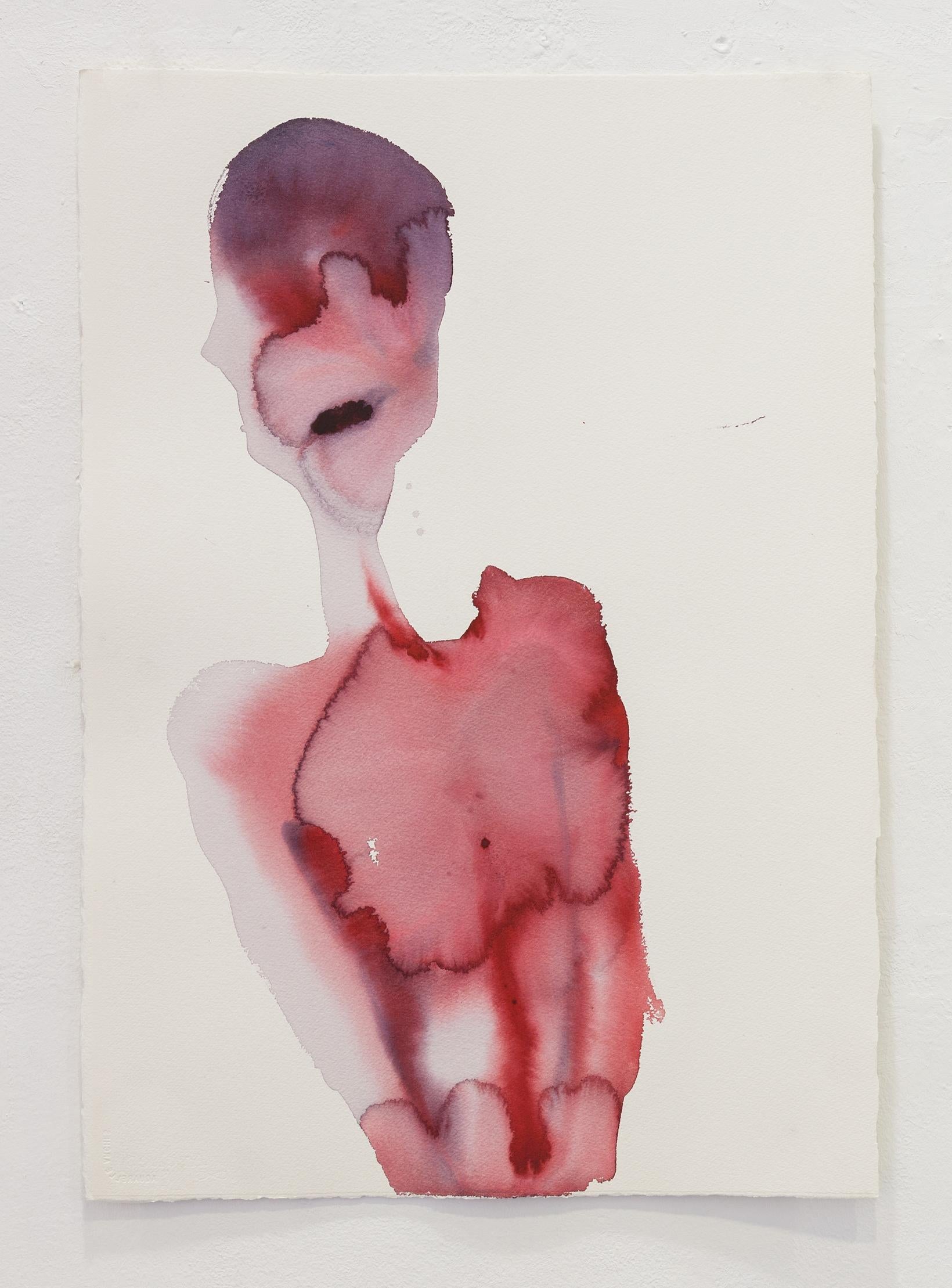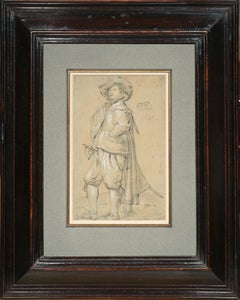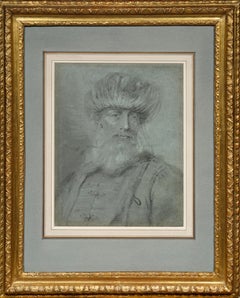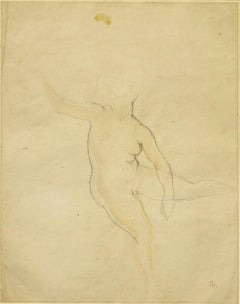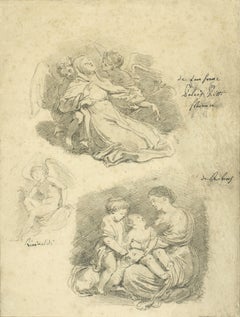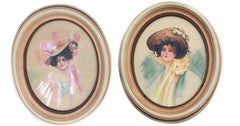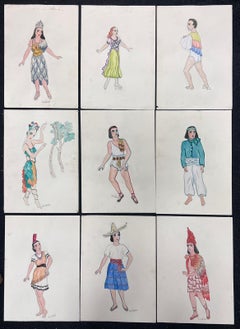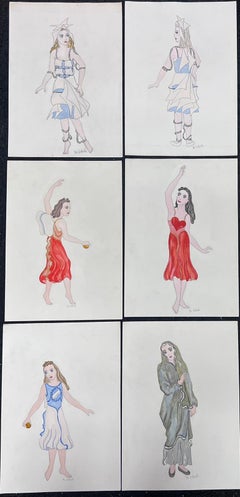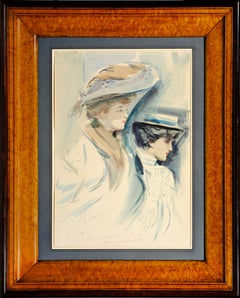
Two Women, a watercolour by Paul Helleu reflecting his passion for yatching
Want more images or videos?
Request additional images or videos from the seller
1 of 11
PAUL-CÉSAR HELLEU Two Women, a watercolour by Paul Helleu reflecting his passion for yatching1899-1913
1899-1913
$40,137.81List Price
About the Item
- Creator:PAUL-CÉSAR HELLEU (1859 - 1927, French)
- Creation Year:1899-1913
- Dimensions:Height: 31.5 in (80.01 cm)Width: 25.6 in (65.03 cm)
- Medium:
- Movement & Style:
- Period:
- Condition:19 ¼” x 14 3/8” (48.9 x 35.6 cm) - framed: 31 ½” x 25 5/8” (80 x 65 cm) Signed "Helleu" and dated "May 7" lower left, above a handwritten inscription "le bateau remua trop pour travailler" ("the boat stirred too much to work").
- Gallery Location:PARIS, FR
- Reference Number:1stDibs: LU1568215243842
About the Seller
5.0
Vetted Professional Seller
Every seller passes strict standards for authenticity and reliability
Established in 2020
1stDibs seller since 2021
10 sales on 1stDibs
Typical response time: 2 hours
Authenticity Guarantee
In the unlikely event there’s an issue with an item’s authenticity, contact us within 1 year for a full refund. DetailsMoney-Back Guarantee
If your item is not as described, is damaged in transit, or does not arrive, contact us within 7 days for a full refund. Details24-Hour Cancellation
You have a 24-hour grace period in which to reconsider your purchase, with no questions asked.Vetted Professional Sellers
Our world-class sellers must adhere to strict standards for service and quality, maintaining the integrity of our listings.Price-Match Guarantee
If you find that a seller listed the same item for a lower price elsewhere, we’ll match it.Trusted Global Delivery
Our best-in-class carrier network provides specialized shipping options worldwide, including custom delivery.More From This Seller
View AllYoung Man with a Sword, a Fist on his Hip, a drawing by Cornelis Saftleven
Located in PARIS, FR
Black chalk and white highlights on paper (originally washed in blue)
Monogrammed and dated 1630 on the right
This drawing, executed in black chalk and enhanced with white brushwor...
Category
1630s Old Masters Portrait Drawings and Watercolors
Materials
Paper, Chalk
Portrait of an Ottoman Dignitary, a drawing by Giuseppe Nogari (ca. 1760)
Located in PARIS, FR
We would like to thank Mrs. Bozena Anna Kowalczyk for confirming the attribution of this drawing to Giuseppe Nogari in a study (available in Italian) from which we have taken our ins...
Category
1760s Old Masters Portrait Drawings and Watercolors
Materials
Laid Paper, Chalk
Study for "Getting up" – 1955, a preparatory drawing by Balthus (1908 -2001)
By Balthus (Balthasar Klossowski de Rola)
Located in PARIS, FR
In 1955, as he was residing at the Château de Chassy in the Morvan for two years, Balthus created a large painting entitled "Getting up". Balthus was inspired for this painting by t...
Category
1950s Modern Nude Drawings and Watercolors
Materials
Watercolor, Pencil
Three studies executed in the Pitti Palace in 1761 by Jean-Honoré Fragonard
By Jean-Honoré Fragonard
Located in PARIS, FR
This brilliant study sheet, of which we present here a counterproof, is a souvenir of Fragonard's return journey from Italy. Between April and September 1761, he accompanied the abbot of Saint-Non on his way back to France. Three studies after the masters taken from the Pitti Palace’s gallery in Florence are gathered on this sheet. Although The Ecstasy of Saint Margaret...
Category
1760s Old Masters Figurative Drawings and Watercolors
Materials
Carbon Pencil
Stag Hunting in the Vicinity of Nuremberg by a German Artist Peter von Bemmel
Located in PARIS, FR
This small landscape shows a hunting scene: two riders are chasing a stag with their dogs at the edge of a forest. Signed by Peter von Bemmel, it is typical of the production of this...
Category
1720s Old Masters Landscape Paintings
Materials
Copper
Infanta - Study Number 6, a 1960 painting by Fermin Aguayo after Velázquez
Located in PARIS, FR
Initialled and dated lower right "a/60", countersigned and dated on the back "aguayo 60".
A breath of modernity animates this iconic work, inspired by Velázquez' portrait of the Inf...
Category
1960s Modern Portrait Paintings
Materials
Canvas, Paper, Oil
You May Also Like
Gibson Girls - Set of Two 1920's Portraits, Vintage Fashion Illustrations
Located in Soquel, CA
Gorgeous pair of two 1920's watercolor portraits of Gibson girls, one in blue and one in pink, by Charles Hollman (Dutch, 1877-1953). Each portrait renders...
Category
1920s American Impressionist Portrait Drawings and Watercolors
Materials
Paper, Watercolor
Set of 9 Figure Illustrations Egyptian Classical Characters Listed American
Located in Cirencester, Gloucestershire
Set of x 9 figures
original watercolour painting on artist paper
signed by Marjorie Schiele (1913-2008) *see notes below
piece of paper is 14 x 10 inches
In good condition
provenance...
Category
Early 20th Century American Impressionist Figurative Paintings
Materials
Watercolor
Set of 9 Figure Illustrations Egyptian Classical Characters Listed American
Located in Cirencester, Gloucestershire
Set of x9 figures
original watercolour painting on artist paper
signed by Marjorie Schiele (1913-2008) *see notes below
piece of paper is 14 x 10 inches
In good condition
provenance:...
Category
Early 20th Century American Impressionist Figurative Paintings
Materials
Watercolor
Set of 6 Figure Illustrations Egyptian Classical Characters Listed American
Located in Cirencester, Gloucestershire
Set of x6 figures
original watercolour painting on artist paper
signed by Marjorie Schiele (1913-2008) *see notes below
piece of paper is 14 x 10 inches
In good condition
provenance:...
Category
Early 20th Century American Impressionist Figurative Paintings
Materials
Watercolor
Mid 20th Century French Modernist Painting -
Located in Cirencester, Gloucestershire
Artist/ School: French School, mid 20th century
Title: Lady in Red
Medium: watercolour on artists paper
Size: painting: 15 x 19.75 inches
Provenance: private collection,...
Category
Mid-20th Century Impressionist Portrait Drawings and Watercolors
Materials
Watercolor
Study of a Seated Figure from Behind Pencil Sketch
Located in Cirencester, Gloucestershire
Study of a Seated Figure
pencil drawing on artist paper
painting: 11 x 8.25 inches
double sided
provenance: private collection, England
condition: very good and sound condition
Category
20th Century Impressionist Portrait Drawings and Watercolors
Materials
Pencil
